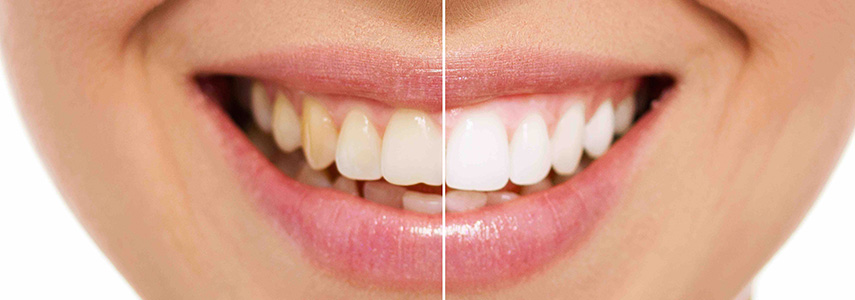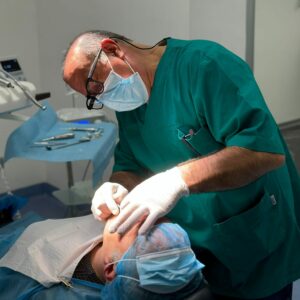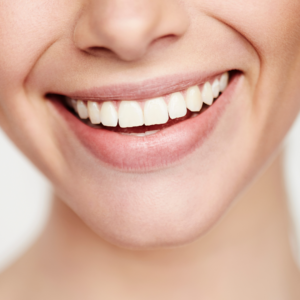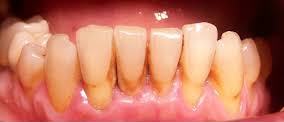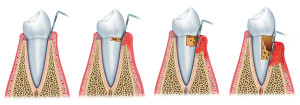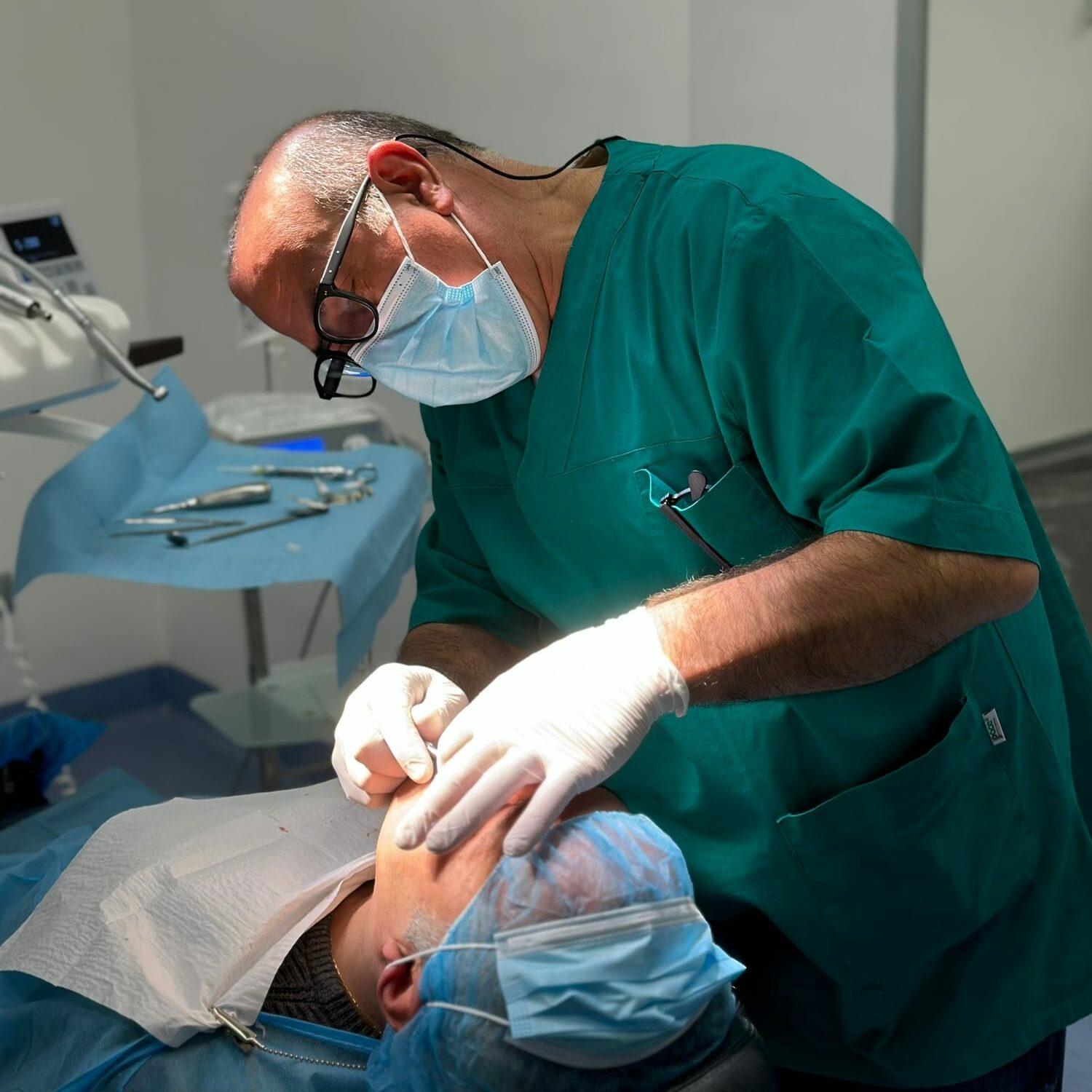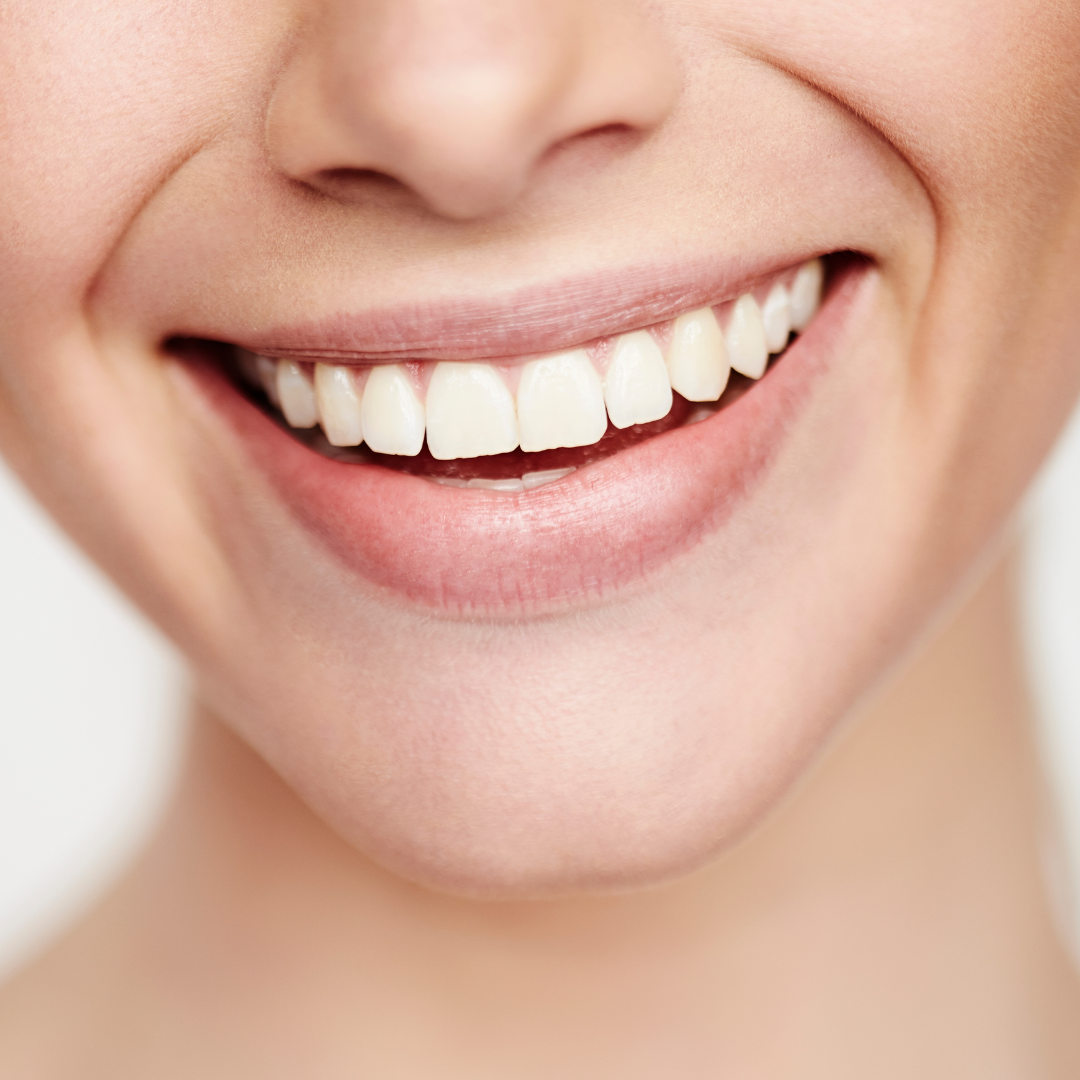Yellow is a beautiful color, lively, it brings joy except in one case: yellow teeth. What does yellowing of the teeth depend on? How can it be solved? Dental and smile aesthetics, today, offers numerous solutions to patients who suffer from the discomfort of a showy and “yellow” smile: cleaning teeth and teeth whitening are two solutions.
At our Sanident dental center we take care of the teeth and their aesthetics, we think that behind a beautiful smile there is also the prevention of other dental problems. Did you know that tartar, plaque and bacteria can cause gum inflammation and in severe cases weaken your teeth to the point of causing their loss (periodontitis or pyorrhea)? And then, it doesn’t take much: preventing, with a dental cleaning, is better than treating a periodontitis.
What is the cause of yellow teeth?
Identifying the cause is not always so easy and sometimes yellow teeth do not spare even those who practice oral hygiene with an enviable constancy. It seems a joke of fate that the yellow spots attack the most deserving teeth. But, then, how can the onset of yellow teeth be explained?
- Eating habits
Often the eating habits or the foods and drinks that we take favor an alteration of the enamel until it deeply affects the dentine. Let’s take a few examples: licorice, coffee, tea, chocolate and caramel can promote yellowing of the teeth.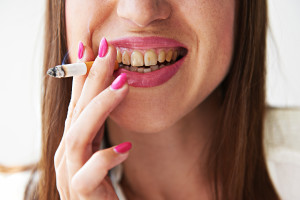
- Smoke
The report known to most reads “yellow-smoking teeth”. Smoking is, in fact, among the major causes of yellowing of the teeth. - Plaque, tartar, caries
The plaque and tartar deposits, beyond food habits, smoking and more meticulous oral hygiene, damage the teeth by turning them yellow, even caries can manifest themselves with small yellow spots on the damaged tooth. - Age
Another factor is the advancement of age which can favor the chromatic alteration of the teeth. - Inheritance
There are also those who are genetically predisposed to yellowing of the teeth, influenced by the thickness of the enamel and the underlying dentin.
Dental cleaning

What in the past was called “whim” is now a widespread practice, which many resort to for prevention as well as to have a beautiful smile without traces of yellow: we are talking about dental cleaning, a treatment also called scaling, dental hygiene e tartar ablation. Because it’s important? Although the patient brushes his teeth very carefully and uses dental floss, this is not enough to remove plaque and tartar from his teeth. Dental hygiene is important and effective because it eliminates plaque and tartar hidden under the gum and in areas that are difficult to reach, keeps teeth healthy, protects them from tooth decay and other dental and gum disease, such as pyorrhea.
Advantages of dental cleaning
In the prevention of dental and gum disease, professional dental cleaning is an allied trust in the teeth and guarantor for their health, even in the long term.
Here are the advantages of dental cleaning:
- it is a treatment that is not limited to the surface but goes deep down to the interdental spaces and sub-gingival area;
- prevents tooth decay, prevents gum inflammation such as periodontitis or pyorrhea, gingivitis, pulpits;
- whitens yellow teeth and effectively removes stains from teeth;
- reduces dental hypersensitivity;
- strengthens and strengthens the teeth;
- prevents the formation of withdrawn gums (remember briefly that the deposition of tartar in the gingival collars promotes gingival retraction)
- avoids premature loss of teeth;
- it is an effective remedy for halitosis.
Dental hygienists suggest performing dental hygiene every 6 months or, at most, once a year. Patients with oral diseases, especially pyorrhea, gingivitis, crooked teeth and dental malocclusion are recommended to have a more frequent dental cleaning, even every three months.
Tip: professional dental cleaning should be accompanied, at least once a year, by a dental check-up: in doing so, the dentist can judge the patient’s state of dental health and possibly see a cariogenic process at the first stage and intervene immediately, before the problem worsens.
Teeth whitening
For professional teeth whitening, pure hydrogen peroxide and LED light are used.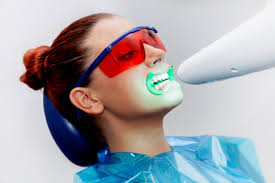
At our Sanident center, the patient is welcomed with a check-up visit, during which the dentist will evaluate the patient’s suitability for treatment. After the check, the dentist will proceed by applying a liquid dam capable of protecting the gums and a hydrogen peroxide-based whitening gel on the teeth. Subsequently the teeth, with the gel applied, are exposed to the led lamp which accelerates the reaction. What happens at this point? The free radicals of oxygen released by hydrogen peroxide are able to attack the large organic molecules of the stains to break them into soluble compounds. In this way the teeth become whiter.
What are the benefits of a Sanident dental bleaching?
- use of high quality products and equipment
- high effectiveness
- quick action
- minimum commitment by the patient
- long lasting results
What is the difference between dental cleaning and whitening?
The difference between the two remedies that solve the yellow tooth problem lies in the different purpose of use. Cleaning the teeth whitens the teeth but also has a curative vocation: it prevents caries, gingivitis, periodontitis. Bleaching, on the other hand, has a more aesthetic nature: for shiny teeth. Both techniques are based on dental aesthetics which, today more than yesterday, attracts the attention of patients. After all, the smile must be preserved and made shining.




